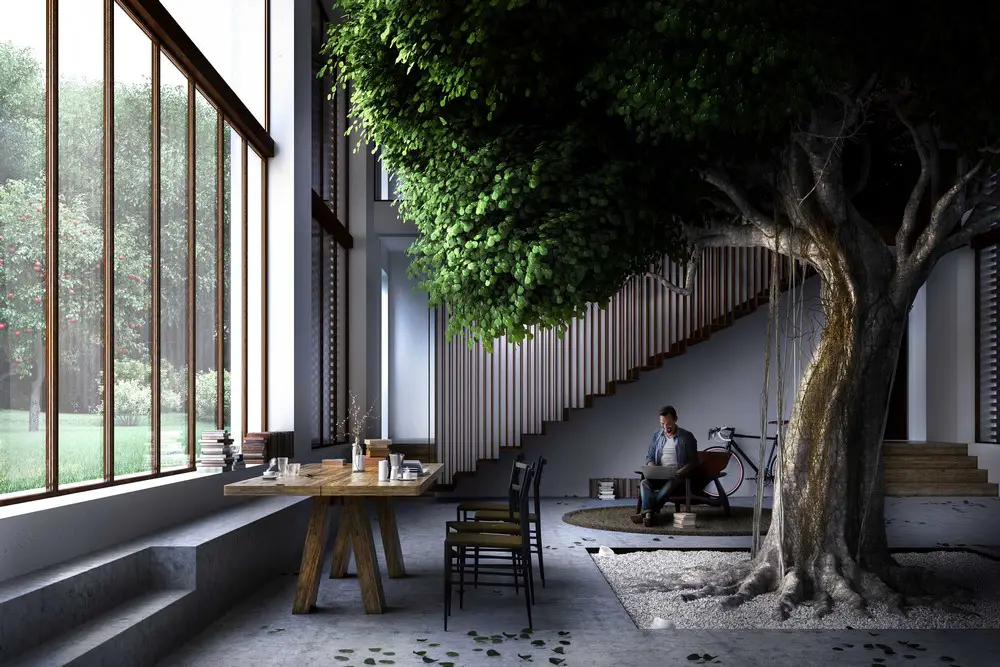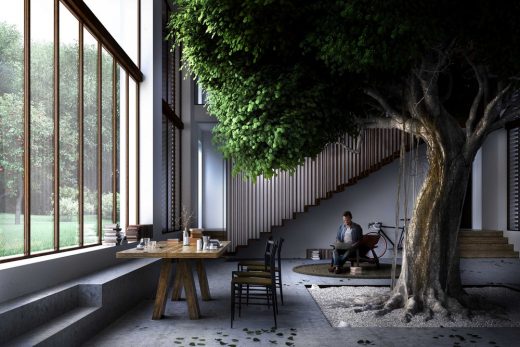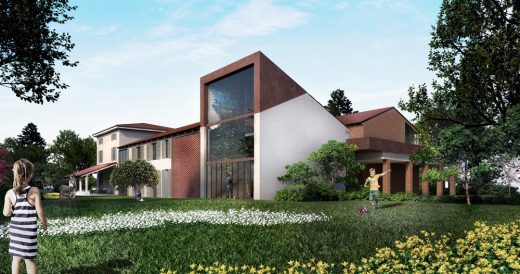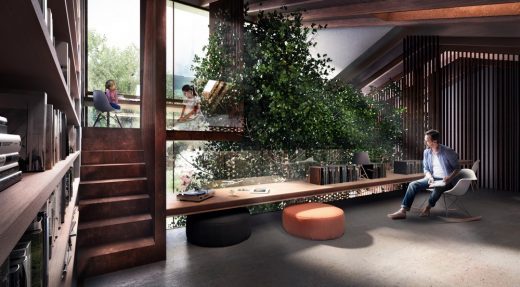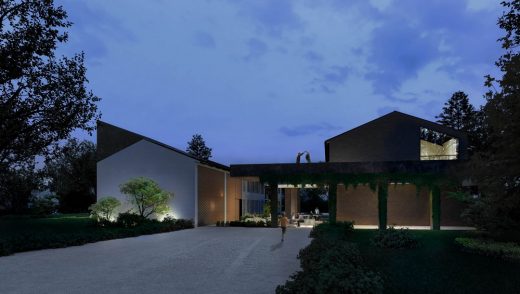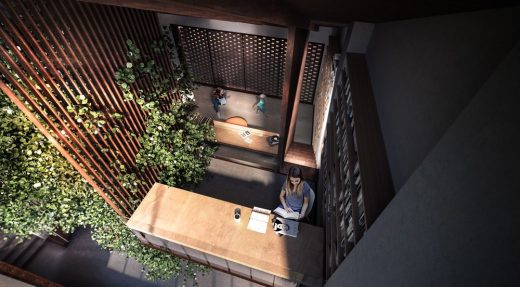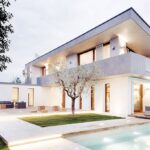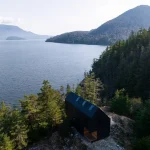The Greenary, Mutti Parma, Northern Italy farmhouse building, Italian architecture images
The Greenary near Parma, Northern Italy
Real Estate Project in Italy for Mutti tomato company design by CRA-Carlo Ratti Associati.
19 October 2021
The Greenary: Building a House around a Tree
Design: CRA-Carlo Ratti Associati, in collaboration with Italo Rota
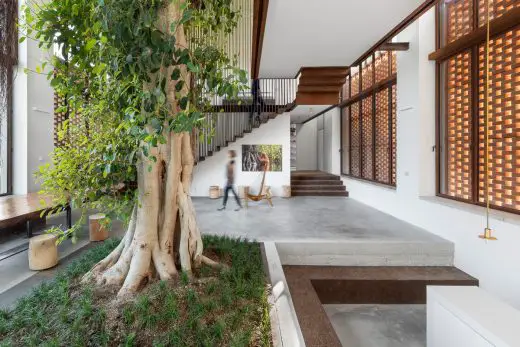
photography ; Delfino Sisto Legnani and Alessandro Saletta from DSL Studio
The Greenary, Parma
8 Oct 2018
Architects: CRA-Carlo Ratti Associati
Location: Parma, north-central Italy
The Greenary: Building a House around a Tree by CRA
CRA unveils the GREENARY, a renovated farmhouse designed around a 10-meter-high tree growing within the main living area. Stepped areas encircle the leafy branches up to the top.
The Greenary near Parma
This Parma building project is the first step of CRA’s winning master plan for Mutti tomato company, which calls for a closer integration between nature and the built environment.
International design and innovation office CRA-Carlo Ratti Associati has unveiled the Greenary, a renovated farmhouse designed around a 10-meter-high (32-feet-high) Ficus growing within the main living area. Living quarters encircle the tree’s leafy branches up to the top. The Greenary will be built in the countryside close to Parma, Northern Italy as a private residence. It is the first step of the master plan for Mutti, the leading tomato company, which CRA won in 2017 after an international competition. The house and the factory are being developed in close continuity due to their physical proximity and their joint call for a closer integration between nature and the built environment.
The Greenary is not a tree-house or a house on a tree, but a house designed around a tree. Life unfolds in sync with a 50-year old Ficus, a perennial tropical plant housed in the middle of the farmhouse’s south hall. All around the tree, a sequence of interconnected rooms creates six domestic spaces – three above the entrance, three below it – each of them dedicated to a specific activity: practicing yoga, listening to music, reading, eating together, sharing a drink, and keeping a wine cellar and storing dry cured ham for aging. Each space is at a different level of the tree, a 3-dimensional sequence that follows Adolf Loos’ principle of Raumplan.
The project starts from the spiritual symbolism of the Ficus tree, whose various species are revered in many parts of the world: the Ficus religiosa is venerated by Buddhists as the Bodhi tree, under which Siddhartha achieved enlightenment, while the Ficus microcarpa adorns the ancient parks of Guangzhou in China. The plant is well-suited for indoor living conditions, as it enjoys stable temperatures all year long. To create the ideal setting for the tree to thrive, CRA has completely redesigned the old farmhouse to maximize natural light through a 10-meter-high (33-feet-high) south-facing glass wall.
“We wanted the design to reflect our innate ‘biophilia,’ the natural impulse to connect with other forms of life, as put forward by the great Harvard biologist Edward O. Wilson,” says Carlo Ratti, founding partner at CRA practice and director of the MIT Senseable City Lab at the Massachusetts Institute of Technology (MIT): “With the Greenary, we are trying to imagine a new domestic landscape built around the rhythm of nature.”
The Greenary puts forward the idea of living inside-out – based on the principle of biophilia. Its dining room sits at the bottom of the 10-meter-high (33-feet-high) glass wall: it is built slightly below ground level, so that the top of the table has the same level of the grass outside. Diners can look out onto the vast orchard where donkeys and other animals stroll.
“Inhabiting each of the rooms will be a bit like inhabiting a tree,” says Andrea Cassi, Project Manager at CRA, talking about the south hall: “As the project breaks down traditional separations between rooms and floors, the Ficus becomes the organizing principle of a contemporary interpretation of the Raumplan for the age of BIM. Every level provides a different perspective on nature.”
The Greenary complex has a total internal space of 800 square meters (8611 square feet). Its call for a closer integration between nature and the built environment is also fundamental to CRA’s master plan for the neighboring Mutti factory. The renovation of the Greenary will start in fall 2018 and be completed in late 2019.
The Greenary near Parma, Northern Italy – Building Information
The Greenary (Mutti House)
Architects: CRA-Carlo Ratti Associati
CRA Team: Carlo Ratti, Giovanni de Niederhausern, Saverio Panata, Andrea Cassi (project manager) Francesco Strocchio (project leader), Alberto Benetti, Anna Morani, Gerolamo Gnecchi Ruscone, Giovanni Trogu
Renderings: CRA graphic team – Gary di Silvio, Pasquale Milieri, Gianluca Zimbardi
Agronomic consulting: Flavio Pollano
Engineering: AI Studio
About CRA-Carlo Ratti Associati
CRA-Carlo Ratti Associati is an international design and innovation office, based in Turin, Italy, with branches in New York and London. Drawing on Carlo Ratti’s research at the Massachusetts Institute of Technology, the office is currently involved in many projects across the globe. Embracing every scale of intervention – from furniture to urban planning – the work of the practice focuses on innovation in the built environment.
Among recent projects in the fields of mobility are the masterplan for MIND (Milan Innovation District), a former world expo site in Milan which will be turned into the world’s first neighborhood planned for autonomous vehicles, and a smart road system for leading European road agency ANAS, featuring multi-sensor poles associated with on-demand drone swarms and facilities for self-driving cars. Other projects include a 280-meter tall green skyscraper in Singapore designed for CapitaLand and the redesign of the Agnelli Foundation HQ in Turin.
CRA is the only design firm whose works have been featured twice in TIME Magazine’s Best Inventions of the Year list respectively with the Digital Water Pavilion in 2007 and the Copenhagen Wheel in 2014. In the last years, the office has also been involved in the launch of startups, including Makr Shakr, a company producing the world’s first robotic bar system, and Superpedestrian, the producer of the Copenhagen Wheel.
The Greenary near Parma, Northern Italy images / information received 081018
Location: Parma, Italy, southern Europe
Italian Architecture Designs
Contemporary Italian Architectural Selection
Italian Architectural Designs – chronological list
Complesso Parrocchiale S Paolo, Foligno
Design: Massimiliano Fuksas, Doriana Fuksas / Massimiliano Fuksas Architecture
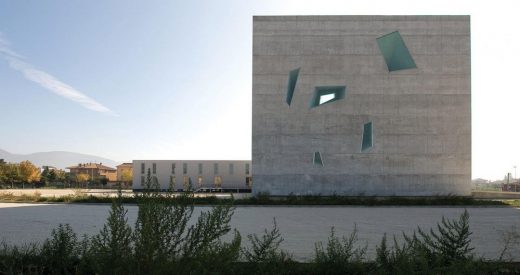
photograph : Moreno Maggi
San Paolo Parish Complex Foligno
The new Ferrari Centro Stile, Maranello, Northern Italy
Architects: Design International and Planning
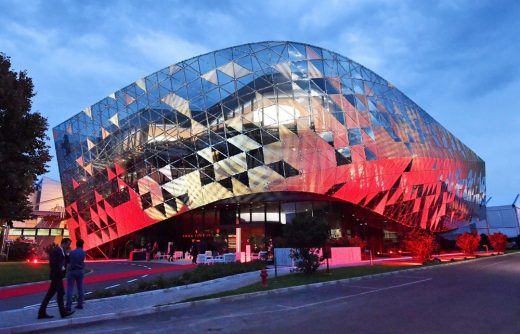
image Courtesy architecture office
Ferrari Centro Stile
Facade of Basilica San Petronio – Wall as a Center, Bologna, Emilia Romagna, north-central Italy
Design: Inter-Esse Studio
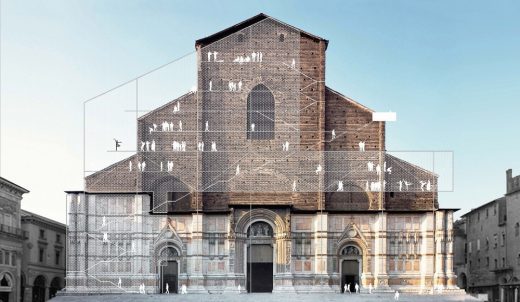
image © IES
Basilica San Petronio, Bologna
Trieste Airport, Trieste, northeast Italy
Architect: Lombardini22
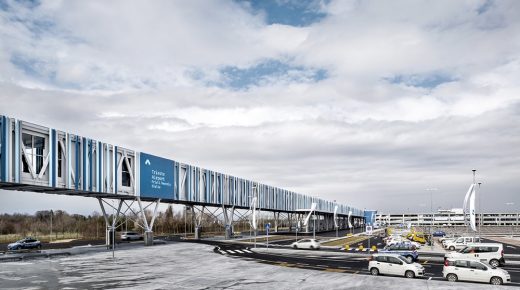
photo : Dario Tettamanzi
Trieste Airport Building
New Woodco Headquarter, Trento
Design: iarchitects
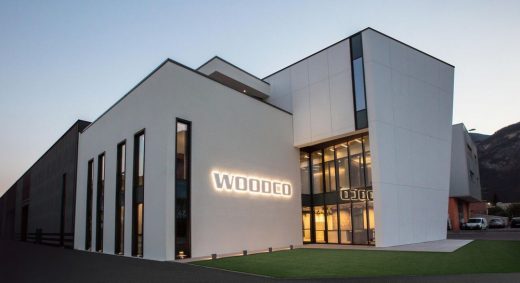
photograph : Claudia Calegari
New Woodco Headquarter in Trento
Italian Buildings
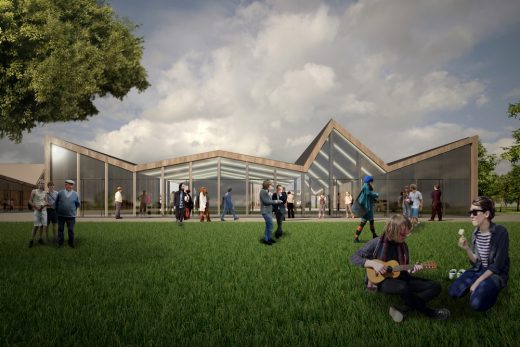
image courtesy of architects
Comments / photos for the The Greenary near Parma – Italy Architecture design by CRA-Carlo Ratti Associati page welcome

